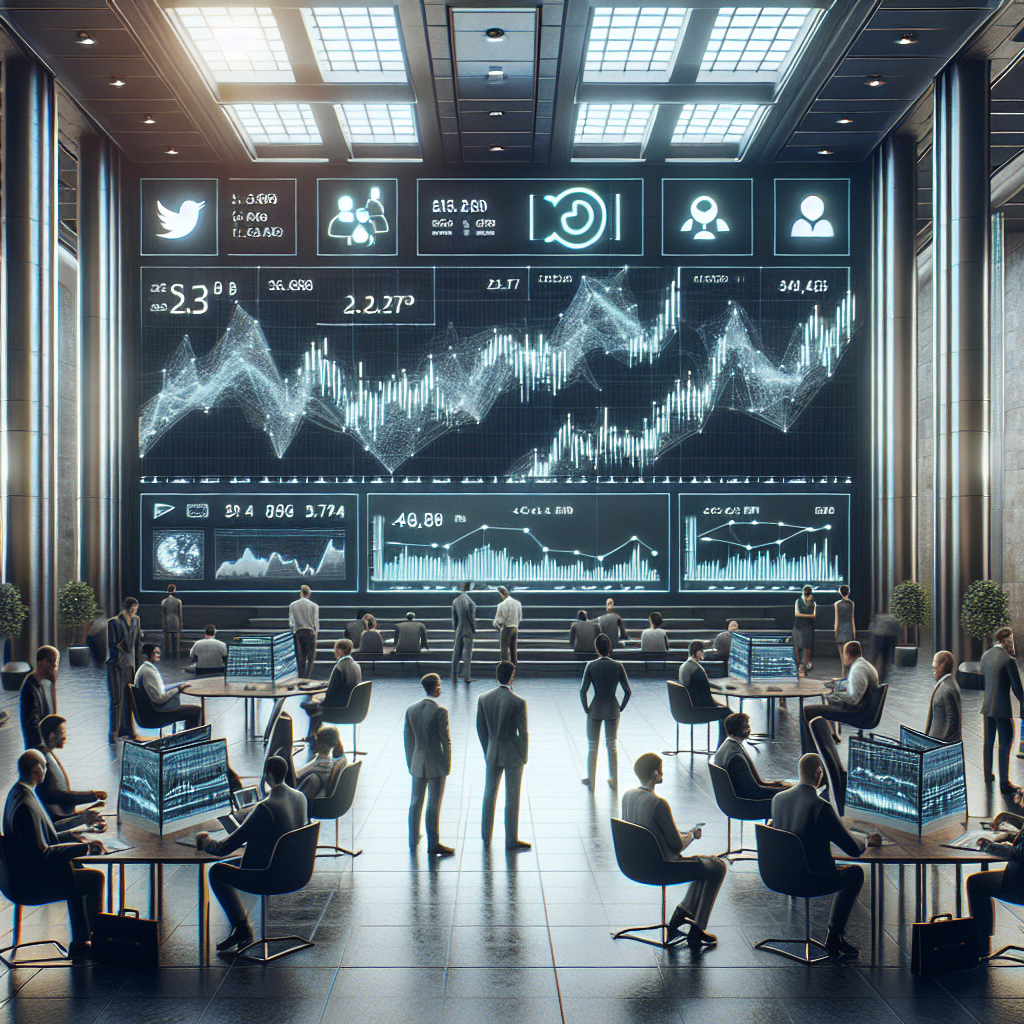How Tweets Drive Market Trends: Understanding the 2025 Stock Landscape
The world of stock trading has transformed dramatically in recent years, and one surprising influencer has emerged as a powerful force in shaping market dynamics: Twitter. By 2025, the “tweet economy” has become an integral component of how investors, analysts, and everyday traders navigate market trends. Social media platforms like Twitter provide real-time information, emotional sentiment, and viral momentum that can spark rapid shifts in stock prices. This fusion of finance and digital communication is reshaping how market trends evolve, requiring market participants to adapt to a more connected and reactive environment.
The Power of Real-Time Information on Twitter
Social media’s real-time nature allows investors to access the latest news, rumors, and opinions faster than traditional media outlets. On Twitter, users share everything from breaking corporate announcements to insider insights in seconds.
How Tweets Accelerate Stock Market Reactions
– Instant dissemination of earnings reports, mergers, or scandals
– Influential personalities and institutional investors broadcasting their positions
– Viral tweets triggering sudden spikes or drops in stock prices
In 2025, traders monitor Twitter feeds closely, often integrating tweet analysis into algorithmic trading models. According to a recent survey, over 60% of retail investors use Twitter as a primary source to gauge market sentiment, highlighting its growing role in shaping market trends.
Sentiment Analysis: Decoding the Emotional Pulse
Market trends have always been influenced by investor sentiment, but the tweet economy introduces new tools for quantifying and acting on emotional data. Sentiment analysis algorithms scan millions of tweets each day to categorize public mood as positive, negative, or neutral regarding specific stocks or sectors.
Leveraging Sentiment Analytics for Predictive Insights
– Identifying early signals for stock rallies or downturns
– Detecting shifts in consumer opinion tied to product launches or controversies
– Supporting risk management strategies by anticipating volatility linked to social chatter
Fund managers in 2025 frequently use these insights to adjust portfolios before traditional indicators catch up. For example, a surge in positive tweets about a tech company’s new product can lead to proactive buying, even prior to official sales reports.
Influencer Impact on Market Trends
The rise of social media influencers and celebrity investors on Twitter has given birth to an unparalleled level of market sway. Tweets from high-profile figures can cause immediate and dramatic movements in stock prices, sometimes detached from fundamental valuations.
Case Studies of Influencer-Driven Market Movements
1. A famous entrepreneur’s endorsement of a renewable energy stock led to a 28% price jump within hours.
2. Celebrity tweets expressing skepticism about a pharmaceutical firm triggered a 15% decline despite solid quarterly results.
This phenomenon forces investors to balance traditional fundamental analysis with social influence monitoring to read market trends accurately.
Algorithmic Trading in the Tweet Economy
Automated trading systems increasingly incorporate Twitter data as a key input. Natural language processing (NLP) models extract actionable intelligence from massive volumes of tweets, forecasting short-term price movements and volatility spikes.
How AI Transforms Market Trends Through Twitter Data
– Filtering noise to identify genuine market-moving tweets
– Executing lightning-fast trades based on sentiment shifts
– Enhancing liquidity and market efficiency during news events
Financial tech firms invest heavily in refining these models, recognizing the competitive advantage gained by harnessing the tweet economy’s pulse. Portfolio managers use these tools to remain agile in a market environment that responds instantly to social media dynamics.
Navigating Risks and Challenges in the Twitter-Driven Market
While the tweet economy offers valuable insights, it also introduces risks that can distort market trends:
– Misinformation and fake news causing misleading market reactions
– Coordinated social media campaigns inflating or deflating stock prices artificially
– Increased volatility complicating long-term investment strategies
Investors must apply critical thinking, cross-verify information, and maintain diversified portfolios to mitigate these risks. Regulatory bodies are also evolving guidelines to monitor social media’s impact on fair trading practices.
Adapting Strategies for 2025 and Beyond
To succeed in the tweet economy, investors and firms should:
– Integrate social media monitoring tools into research workflows
– Employ sentiment analysis to complement traditional financial metrics
– Stay alert to influential voices and emerging social trends impacting sectors
– Develop contingency plans for social media-driven volatility swings
By embracing these strategies, market participants can transform the challenges of the tweet economy into opportunities for enhanced decision-making.
The tweet economy’s influence on market trends is undeniable in 2025, revolutionizing how information flows and decisions are made. Staying informed and agile in this landscape allows investors to capitalize on the real-time pulse of financial markets.
To explore how you can leverage technology to navigate evolving market trends, contact Aiscend at https://automatizacionesaiscend.com and elevate your investment strategies today.



